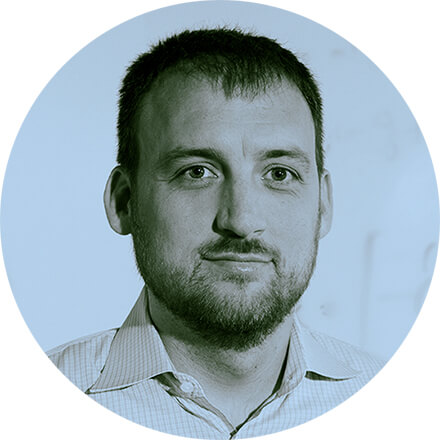Governments can use unclassified data sources and risk modeling to make more informed decisions on which Russian billionaires are part of the problem and which can be leveraged as part of the solution.
Last Wednesday, the Department of Justice formally announced Task Force KleptoCapture soon after President Biden introduced the initiative in his State of the Union address. The goal of the effort is to “isolate Russia from global markets and impose serious costs for this unjustified act of war, by targeting the crimes of Russian officials, government-aligned elites, and those who aid or conceal their unlawful conduct.”
This mission begs the question of “how”. Beyond the basic question of which individuals and organizations are targeted, there is also the question of which particular sanctions and actions serve the greater mission, and which do not. Blunt force approaches may be counterproductive when certain individuals may be leveraged in more strategic ways. For example, should old money oligarchs (via oil) be treated the same as new money oligarchs (via tech)? The answers to similar questions are not always obvious, and smart sanctions or “precision guided sanctions” should be considered to take advantage of the unique position of each entity-of-interest.
While Quantifind is not in a position to make fully-informed strategic recommendations, we are in a position to create deep knowledge resources anchored on oligarchs and other target officials, including the tangled web of relationships, risks, and assets they possess. This knowledge, in turn, creates increased optionality in strategic conversations. Regardless of the end strategy, high-resolution knowledge and the resulting optionality should always enable more optimal solutions.
In this article, we do not (for obvious reasons) provide all of the information necessary to inform an effective sanctions or enforcement strategy. However we do draw from our experience analyzing oligarchs and Russian state influence to discuss issues that should be considered by any government strategist (or technical entity screener, at a bank or intelligence agency) when making smart sanctions or enforcement related decisions. The following observations are derived from an in-depth analysis of our data, including an internal self-directed review of oligarchs against our open source Knowledge Graph, and less from an arm-chair strategic perspective.
Observation: Definitions Are Difficult
Previous oligarch lists from the government, e.g., from the Treasury in 2018, have received criticism for essentially copying and pasting the Forbes list of wealthiest Russians. Of course this is problematic because wealth is variable (or hidden) and it is difficult to quantify the influence any particular entity has on political or leadership decisions. Not all rich Russians are Putin puppets, though it may be a question of degree. Even given such a list, the mechanics of sharing the sanction information can be mishandled in a way that is not only incorrect, but irresponsible. For example, the 2018 Treasury list was in a non-OCR PDF form that was transcribed by CNN with multiple transcription errors, e.g., mislabeling “Andrey” as “Audrey”. Practitioners should exercise caution in all name matching. Even with correct names, it is difficult to compile a full list of metadata (middle names, birthdates, aliases, relationships) to allow technical efforts to perform precise, responsible identity matching. Some countries do this better than others.
Quantifind has integrated many public and commercial databases into a Knowledge Graph, which can be filtered to produce an oligarch-relevant subgraph to address the problem at hand. We have also prepared a “Risk Card” for Oligarchs, to belabor definitional details and signal sharing, which draws on similar risk cards for PEPs (Politically Exposed Persons), Corruption, and Russian State Influence. (In a previous post, we introduce the motivation behind the concept of a Risk Card, which is meant to facilitate communication between domain experts and data scientists.)
Observation: Old Money Is Different Than New Money
All oligarchs are rich, but not all oligarchs are created equal. There is a marked difference between the older set who came to power in the 1990s through sweetheart natural resource deals, versus the younger set who came to wealth through technology in the new century. Yandex (Russia’s Google) and Telegram are in uniquely strategic situations when it comes to control and freedom of the information environment. There are also Silicon Valley investors from Russia with deep Western ties (e.g., DST). Indiscriminately treating them as equivalent to a Rosneft, for example, may be a mistake. Similarly, excluding the new money off hand based on industry, as some sanctions lists do, is also questionable.
Whether culpable or not, these organizations are also at risk of bankruptcy, which is a “Financial Health” risk that Quantifind also tracks on behalf of financial institutions or those who care about the resilience of their partners.
Observation: The West Is Entangled
There are several western countries that are likely over-represented in their organizational relationships with oligarchs and their organizations. The UK and London, sometimes referred to as “Londongrad” for this reason, are particularly exposed to oligarch networks resulting from historical policies. Energy, tourism, and development projects are intricately related industries that spill over national borders, including Germany and France. US entities have also provided real-estate shelters for oligarchs (e.g., in New York and Florida), and invited semi-legal entanglements in particular industries, like Cannabis. In addition, there are many US name brands, from investment banks to consumer goods to tech companies, that are coinvested in projects with oligarchs, some of which have divested publicly and some of which have not.
Observation: Shell Games Mask Ownership
Oligarchs, along with other international criminals, have also found respite in notorious offshore centers. Our data sets show a large contingent of explicit and implicit corporate connections through Cyprus and British Virgin Islands (BVI) connections. These connections should be aggressively de-anonymized and untangled. The fact that Switzerland is cooperating with the West should give some hope to those who want more cooperation from these other traditional homes of obfuscation.
Observation: Analysis Should Include Collective Risk Assessments
Quantifind’s platform assigns risk labels to entities, and a risk perspective is particularly useful when prioritizing the extended networks of oligarchs for analysis. The usual oligarch suspects are particularly over-represented in certain risk typologies including Private Military Companies (ChVK, like Wagner Group), Disinformation, Weapons Trafficking, Corruption, and Foreign State Influence. Not surprisingly, many of these typologies share their central oligarch influencers, and thus should be considered together not in isolation. These subnetworks offer a law enforcement angle to the KleptoCapture effort, and this kind of “sensemaking” should be added to any “collection” effort, such that finite attention is placed on relationships of interest and not indiscriminately wasted on the very large number of benign network connections. The above risks, including that of being an Oligarch itself, have been extensively documented by Quantifind with Risk Cards.
Observation: Laundered Assets Are Diversified
A principal objective of the KleptoCapture task force will be to seize assets of the oligarchs. These assets are being dutifully mapped and tracked by a large OSINT community, including superyachts, real estate, and private jets. These are the easier targets, and many have already been captured, however additional focus should also be placed on other assets that help facilitate money laundering, including crypto and art. Quantifind is able to find connections to certain organizations that indicate which oligarch relationships are more likely to lead to these hidden assets.
Observation: Great Powers Are Entangled
Through our Knowledge Graph, we are also able to see which companies are tied to other potential adversaries, in sometimes oblique ways, including China and Iran. These should also be treated surgically, such that a coarse approach does not put the US at risk of optimizing specific short term problems at the expense of longer term objectives. Again, we are not arguing for one strategy or its opposite, only that this information should be considered and decisions should be made with eyes wide open.
Observation: Lawyers Can Be Leveraged
Finally, there are certain ties that can be identified through OSINT (open source intelligence) and then leveraged as HUMINT (human intelligence sources) to put pressure on oligarchs or dig out more hard-to-get information. Not unlike tried-and-true efforts to infiltrate organized crime networks (see Al Capone’s lawyer), the oligarchs can be similarly brought to bear. For example, Alastair Tulloch of the UK is a known enabler, and other lawyers, e.g., Leigh Sprague, have already been exposed to conflict with Putin associates. These connections will be incentivized to disentangle themselves from increasing pressure from the international community.
Summary
Quantifind has access to a multitude of OSINT data sets (both public and commercial), that, when integrated into a Knowledge Graph, reveal the interrelated, multilayered networks connecting oligarchs to assets, sources, and other entities of interest. We have also extensively documented a computational, operationalized approach to all associated risks and performed an oligarch-specific analysis on top of our massive Knowledge Graph fusing many OSINT data sources. Please reach out to contact@quantifind.com to learn more.

